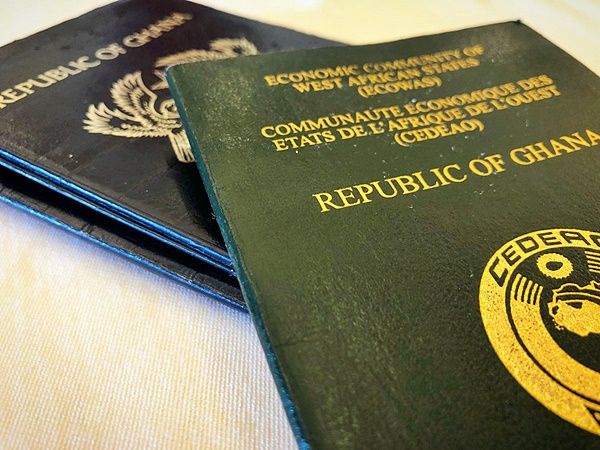Why Are Passports Different Colours And What Do They Mean? | General News
[ad_1]
Ever wondered what your passport colour says about your country? From red to green, each shade tells a unique story about national identity and history.
Green passports are issued by countries including Ghana, South Africa, Pakistan, Morocco, Saudi Arabia and more.
As well as red and blue, you might also come across black passports but it seems there is actually a meaning behind the colours used for certain countries.
Blue passports are issued by countries including the UK, USA, Canada and Brazil.
UK passports have recently changed colour from red to blue following Brexit but what do the colours of passports mean?
Before the UK passport changed to blue, it was red and many Brits still own red passports but will receive a blue when they next renew it.
Ghana
In Ghana, there are three types of passport booklets – Contemporary (regular), Service, and Diplomatic passports.
Ghanaian passport booklets are valid for travel by Ghanaians anywhere in the world, although the holder may need to obtain a visa from the destination country when travelling for some purposes.
Ghanaian passports are issued exclusively by the Ministry of Foreign Affairs and Regional Integraton to Ghanaians granted citizenship in accordance with the laws of Ghana. More than one valid Ghanaian passport of the same type may not be held.
– Contemporary (ordinary, cover colour – hunter green) – Issuable to all citizens and non-citizen nationals and valid for ten years from the date of issue
– Service (cover colour, cadet gray) – Issuable to officials attached to government institutions who travel on official business
– Diplomatic (cover colour, red (Auburn) – Issuable to Ghanaian diplomats accredited overseas and their eligible dependents
The Instagram account @weroad has shared an insight into the different colours, which countries use them and what the colours mean.
It has also explained who decides on the colours of passports.
What do passport colours mean?
The travel company, which credits the Instagram account @flightbae.b as the source of information, explains that blue passports are usually associated with freedom and stability plus they have high mobility.
High mobility is the amount of visas that aren’t needed to access the countries with a blue passport.
Blue passports are issued by countries including the UK, USA, Canada and Brazil.
It further explains that green passports are issued in Middle Eastern or African countries with the colour being “associated with Islam and the Arab world”.
These passports have lower mobility as these countries typically require “more visas and more trouble restrictions.”
So why are some passports red?
The Instagram account explains that the colour red is “often associated with power and authority”.
Red passports are typically issued by countries within the European Union (EU) and they are classed as high global mobility.
Countries with red passports include the UK (some people are still using them), Italy, Japan, China and more.
There are also black passports issued in some countries which are said to be associated with countries in Africa.
This colour has links to sophistication and power but these countries have low global mobility with higher restrictions and more visas needed to access them.
Zambia, Botswana, Malawi and Angola are among the countries that issue black passports.
Who decides the colour of passports?
With so many colours used for passports, you might be wondering who decides which country is issued with each colour.
The colour of passports is determined by the government of each country and the chosen colour can depend on a few factors.
These include historical precedents, national identity, regional agreements and practicality such as the durability and visibility of the passport.
Source: graphiconline
| Disclaimer: Opinions expressed here are those of the writers and do not reflect those of Peacefmonline.com. Peacefmonline.com accepts no responsibility legal or otherwise for their accuracy of content. Please report any inappropriate content to us, and we will evaluate it as a matter of priority. |
Featured Video
[ad_2]
Source link













Leave a Reply